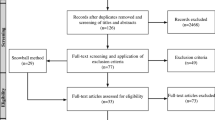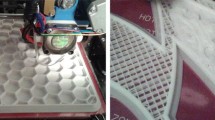Abstract
We propose dynamic 3D plastic and redistributable technology (D3PART), a model to handle redistribution for 3D user interfaces. Redistribution consists in changing the components distribution of an interactive system across different dimensions such as, platform, display and user. Our work is based on previous models for the creation of 3D plastic user interfaces, interactive systems that can handle the context of use modifications while preserving usability. In our previous work, we proposed a task model, a device model and an application component model for the creation of plastic user interfaces that handle the 3D specificities. With D3PART, we extend these models in order to include redistribution capabilities. The final solution lets developers create applications where 3D content and tasks can be automatically redistributed across the different dimensions at runtime. The proposed redistribution process is based on a client-server architecture with a meta-user interface to control the redistribution configuration. In order to illustrate D3PART, we describe three different scenarios of redistribution between a tablet and a CAVE for a 3D application for furniture planning. Indeed, with an implementation of our model, we show how redistribution can be used at runtime to combine these platforms, to switch seamlessly from one platform to another, and lastly, how redistribution can be used to create a collaborative context of use.









Similar content being viewed by others
References
(1992) A metamodel for the runtime architecture of an interactive system: the UIMS tool developers workshop. SIGCHI Bull 24(1):32–37
Badam SK, Elmqvist N (2014) Polychrome: a cross-device framework for collaborative web visualization. In: Proceedings of the ninth ACM international conference on interactive tabletops and surfaces. ACM, pp 109–118
Bandelloni R, Paternò F (2004) Migratory user interfaces able to adapt to various interaction platforms. International journal of human-computer studies 60(5):621–639
Bharat KA, Cardelli L (1995) Migratory applications. In: Proceedings of the 8th annual ACM symposium on user interface and software technology. ACM, pp 132–142
Bierbaum A, Hartling P, Morillo P, Cruz-Neira C (2005) implementing immersive clustering with VR Juggler. In: ICCSA 2005, Springer, Berlin, pp 1119–1128
Bouville R, Gouranton V, Boggini T, Nouviale F, Arnaldi B (2015) No. five: high-level components for developing collaborative and interactive virtual environments. In: Proceedings of eighth workshop on software engineering and architectures for realtime interactive systems (SEARIS 2015), conjunction with IEEE virtual reality (VR)
Calvary G, Coutaz J, Dâassi O, Balme L, Demeure A (2005) Towards a new generation of widgets for supporting software plasticity: the “comet”. In: Bastide R, Palanque P, Roth J (eds) Engineering human computer interaction and interactive systems: joint working conferences EHCI-DSVIS 2004, Hamburg, 11-13 July 2004, Springer, Berlin, Hamburg, pp 306–324
Calvary G, Coutaz J, Thevenin D, Limbourg Q, Bouillon L, Vanderdonckt J (2003) A unifying reference framework for multi-target user interfaces. Interacting with computers 15(3):289–308
Coffey D, Malbraaten N, Le T, Borazjani I, Sotiropoulos F, Keefe DF (2011) Slice wim: a multi-surface, multi-touch interface for overview + detail exploration of volume datasets in virtual reality. Symposium on interactive 3D graphics and games, I3D ’11ACM, New York, NY, USA, pp 191–198
Coutaz J (1987) PAC, on object oriented model for dialog design. In: Interact’87, 6 pp
Cruz-Neira C, Sandin DJ, DeFanti TA, Kenyon RV, Hart JC (1992) The CAVE: audio visual experience automatic virtual environment. Commun ACM 35(6):64–72
Demeure A, Sottet JS, Calvary G, Coutaz J, Ganneau V, Vanderdonckt J The 4C reference model for distributed user interfaces. In: ICAS 2008, pp 61–69
Elmqvist N (2011) Distributed user interfaces: state of the art. In: Distributed user interfaces: designing interfaces for the distributed ecosystem Springer, London, pp 1–12
Figueroa P, Green M, Hoover HJ (2002) InTml: a description language for VR applications. In: Proceedings of the seventh international conference on 3D web technology, ACM, New York, pp 53–58
Fleury C, Duval T, Gouranton V, Arnaldi B (2010) Architectures and mechanisms to maintain efficiently consistency in collaborative virtual environments. In: SEARIS 2010 IEEE VR 2010 workshop on software engineering and architectures for realtime interactive systems, Waltham
Gonzalez-Calleros J, Vanderdonckt J, Muoz-Arteaga J (2009) A structured approach to support 3d user interface development. In: ACHI 2009, pp 75–81. doi:10.1109/ACHI.2009.14
Hand C (1997) A survey of 3D interaction techniques. Comput Graph Forum 16:269–281
Hutchings HM, Pierce JS (2006) Understanding the whethers, hows, and whys of divisible interfaces. In: Proceedings of the working conference on advanced visual interfaces. ACM, pp 274–277
Klokmose CN, Beaudouin-Lafon M (2009) VIGO: instrumental interaction in multi-surface environments. In: Proceedings of the SIGCHI conference on human factors in computing systems ACM, New York, pp 869–878
Lacoche J, Duval T, Arnaldi B, Maisel E, Royan J (2014) A survey of plasticity in 3D user interfaces. In: 2014 IEEE 7th workshop on software engineering and architectures for realtime interactive systems (SEARIS), pp 19–26
Lacoche J, Duval T, Arnaldi B, Maisel E, Royan J (2015) Plasticity for 3D user interfaces: new models for devices and interaction techniques. In: Proceedings of the 7th ACM SIGCHI symposium on engineering interactive computing systems, 23–26 June 2015, ACM, New York, pp 28–33
Lacoche J, Duval T, Arnaldi B, Maisel E, Royan J (2016) D3PART: a new model for redistribution and plasticity of 3D user interfaces. In: 2016 IEEE symposium on 3D user interfaces (3DUI), IEEE, Greenville, pp 23–26. doi:10.1109/3DUI.2016.7460026
Lindt I (2009) Adaptive 3d-user-interfaces. Ph.D. thesis
Margery D, Arnaldi B, Plouzeau N (1999) A general framework for cooperative manipulation in virtual environments. In: Michael G, Dieter S, Axel H (eds) Virtual environments ’99. Springer, Vienna, pp 169–178
Massó JPM, Vanderdonckt J, López PG, Fernández-Caballero A, Pérez MDL (2007) Rapid prototyping of distributed user interfaces. In: Computer-aided design of user interfaces V. Springer, Dordrecht, pp 151–166
Medeiros D, Carvalho F, Teixeira L, Braz P, Raposo A, Santos I (2013) Proposal and evaluation of a tablet-based tool for 3D virtual environments. SBC 4(2):31
Melchior J, Grolaux D, Vanderdonckt J, Van Roy P A toolkit for peer-to-peer distributed user interfaces: concepts, implementation, and applications. In: EICS 2009. ACM, pp 69–78
Melchior J, Vanderdonckt J, Van Roy P (2011) A model-based approach for distributed user interfaces. In: Proceedings of the 3rd ACM SIGCHI symposium on engineering interactive computing systems. ACM, pp 11–20
Rauterberg M, Fjeld M, Krueger H, Bichsel M, Leonhardt U, Meier M BUILD-IT: a planning tool for construction and design. In: CHI 1998. ACM, pp 177–178
Rekimoto J Pick-and-drop: a direct manipulation technique for multiple computer environments. In UIST 1997. ACM, pp 31–39
Sjölund M, Larsson A, Berglund E (2004) Smartphone views: building multi-device distributed user interfaces. In: International conference on mobile human–computer interaction. Springer, pp 507–511
Stoakley R, Conway MJ, Pausch R Virtual reality on a WIM: interactive worlds in miniature. In: CHI 1995. ACM, pp 265–272
Thevenin D, Coutaz J (1999) Plasticity of user interfaces: framework and research agenda. Proc INTERACT 99:110–117
Yokoyama S, Ishikawa H (2011) Parallel distributed rendering of html5 canvas elements. In: International conference on web engineering. Springer, pp 331–345
Zöllner M, Jetter HC, Reiterer H (2011) ZOIL: a design paradigm and software framework for post-WIMP distributed user interfaces. In: Distributed user interfaces: designing interfaces for the distributed ecosystem, Springer, London, pp 87–94
Author information
Authors and Affiliations
Corresponding author
Electronic supplementary material
Below is the link to the electronic supplementary material.
Supplementary material 1 (mp4 35578 KB)
Rights and permissions
About this article
Cite this article
Lacoche, J., Duval, T., Arnaldi, B. et al. Providing plasticity and redistribution for 3D user interfaces using the D3PART model. J Multimodal User Interfaces 11, 197–210 (2017). https://doi.org/10.1007/s12193-017-0239-x
Received:
Accepted:
Published:
Issue Date:
DOI: https://doi.org/10.1007/s12193-017-0239-x




